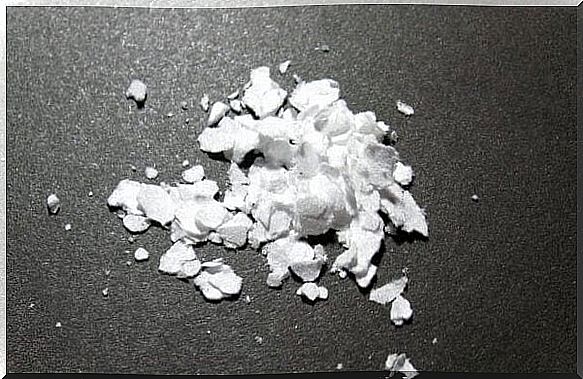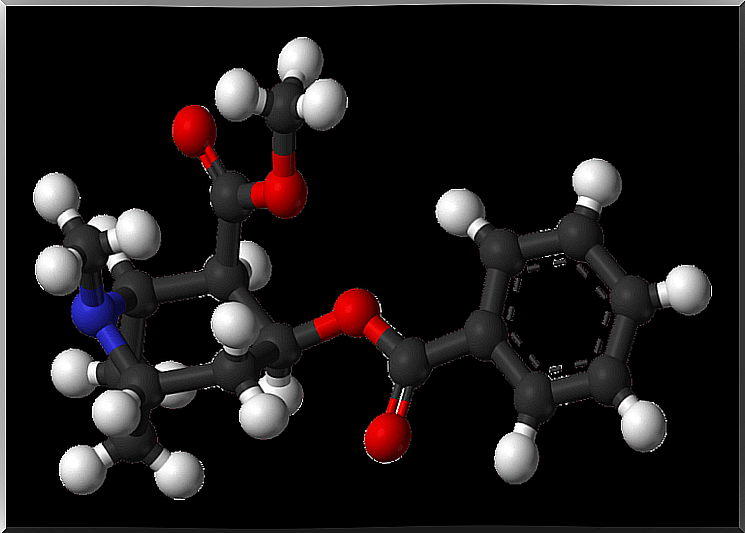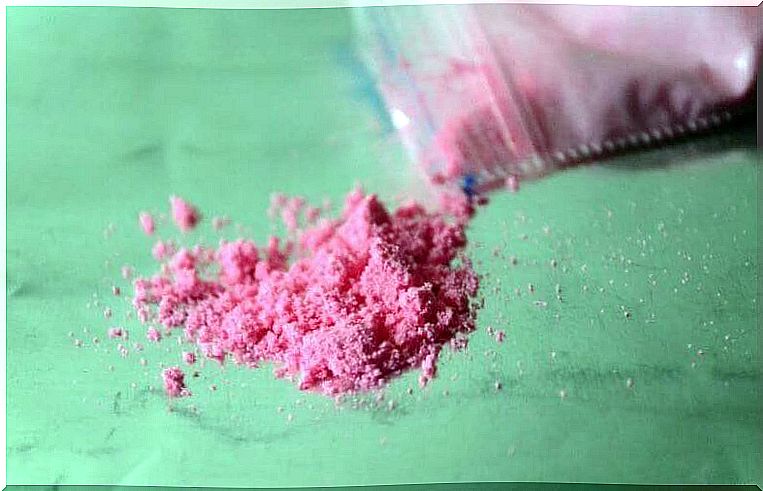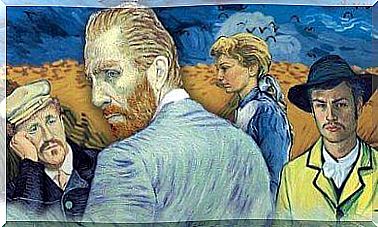Cocaine: Types And Effects

Cocaine is a powerful, extremely addictive stimulant that is almost always used as a recreational drug. It comes from the coca leaf and began to become very popular in the 1980s. In its natural shrub form, it has been consumed for thousands of years by people from America.
Its pure chemical form is cocaine hydrochloride, a substance that has been developed in the laboratory for over 100 years. At the beginning of the 20th century, this compound was the active principle of various elixirs and tonics used for medicinal purposes. Currently, it is still used as an anesthetic in throat, ear and eye surgery.
Cocaine has also been used as a component of several cold drinks. The best known of these is “Coca-Cola”. The original formula of this brand’s star drink contained 8 milligrams of cocaine per liter. However, this drug began to become unpopular due to its severe effects and Coca-Cola withdrew it from its recipe in 1903. In 1914, cocaine became an illegal drug.
These days, it is difficult to find cocaine in its chemically pure form ; it is mixed with starches, talcs, sugar or other elements. This substance has different names such as “coke”, “snow”, “white lady” or “talc”. In English, it is given names such as “blow”, “flake”, “coke” or “snow”.
As noted above, its pure chemical form is cocaine hydrochloride, although the purity levels of the latter vary depending on how you handle it. The best quality cocaine reaches 98% purity and is known as “Yen” on the black market. It’s the most expensive, and it looks whiter and brighter than the rest.

The hydrochloride is in powder form. It is estimated that powdered cocaine that is sold on the black market is generally between 5 and 40% pure. Sometimes it is mixed with very dangerous substances such as amphetamines or certain anesthetics. Usually, powdered cocaine is sucked in or “snorted”. However, it is also common to inject it.
There are different varieties of “white cocaine” of medium or low purity. The most popular is the one known as “chalk”. It is called so because it has a grayish white color and little shine. This strain is highly euphoric. There is also another category called “yellow cocaine”. They are characterized by their strong smell of gasoline or kerosene. They are the most powerful of all.
Cocaine is also found in “base” form. This is what is popularly known as “crack”. Its use began to expand when authorities activated severe restrictions on the chemicals needed to obtain cocaine hydrochloride. As a result, its price has soared to levels unattainable for many consumers. This has led to the commercialization of “basic” cocaine, which is 15 times cheaper.
Crack is the mixture of cocaine hydrochloride and other chemicals like ammonia, ether, and baking soda. Normally it is smoked with a pipe and its effects are much more severe than those of cocaine hydrochloride alone. It is also potentially addicting and increases the risk of death. It is called “crack” because of the sound it produces when crumbling.
Another form of this drug is called cocaine paste, also known as “cocaine sulfate”. This is due to the fact that up to 50% of this substance is a sulfate. To make it, highly toxic components, such as methanol or sulfuric acid, are used. Usually it is combined with marijuana or tobacco and smoked.
Both crack and cocaine paste produce a “flash” type effect. This means that the effect is fast and very powerful. For this reason, cocaine addicts find themselves in the need to consume several successive doses, to prolong the effect. Both have a high risk of overdosing.
The effects of cocaine appear almost immediately after consuming it. Sometimes they last a few minutes and others reach an hour. This substance causes feelings of euphoria and great vitality. The consumer feels mentally alert and strengthens their sensory perceptions, especially sight, hearing and touch.
It is usual for cocaine to decrease the need to eat and sleep. Some users report that the drug helps them complete their tasks at a much faster rate. Others, on the contrary, feel that cocaine slows them down.

The duration and intensity of the effect depend on the type of cocaine you use and the method you choose to ingest it. The faster the absorption, the greater the intensity of the effect, but also the shorter. Sometimes feelings of worry, anxiety and irritability appear. Spasms, paranoia and dizziness are also common.
From a physical standpoint, cocaine alters the heartbeat and can cause headaches, abdominal pain, and vomiting. If there is an overdose, the user may have seizures, stroke, or go into a coma. Sudden death is not common, but cardiac arrests occur which lead to death.
The main long-term effect of cocaine is severe addiction. As the addictive potential is very high, it is not possible for a person to predict how much they may need the drug after their first use. There is also a high risk of relapse when you stop ingesting it. This even happens several years after stopping use.
The brain adapts to cocaine use. This means that the feeling of gratification is less and less important. For this reason, the cocaine addict has to take larger doses or more frequently to get the same pleasant feeling from the first few times. Over time, the bothersome effects of the drug such as feelings of anxiety, paranoia or outbursts of anger begin to intensify.
In more serious cases, we lose our sense of reality for long periods of time. Hallucinations appear, mainly auditory, and one can fall into a state of paranoid psychosis.
MRI scans show that in the brain of a cocaine addict, there is a decrease in dopamine receptors. As a result, the person becomes unable to experience gratifying sensations in a natural way.
It is very difficult to predict what will be the fate of a person addicted to cocaine, since it depends on various factors and even on chance. As consumption is regular, the risk of death gradually increases, as does damage to personality and relationships with others.
Recently, trials have been carried out with various pharmacological treatments, but none of them passed all the tests.

Self-help groups are always a great alternative. Usually, they are accompanied by individual therapy. This, coupled with a proper diet, a consistent exercise program, and a support network, appears to work well in the majority of cases.
However, getting out of addiction is by no means easy. Therefore, prevention is better than cure. Cocaine is not a drug to be tested out of curiosity or to have a new experience. A single drink can trigger a series of situations that, in the long run, could turn into a tragedy.










